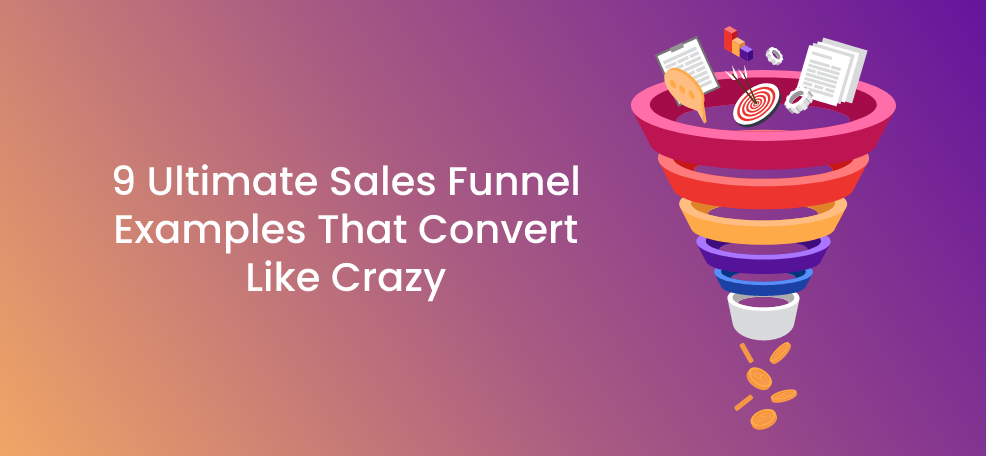If your lead generation was a ship, a sales funnel would be its captain.
Everyone knows that running a business means first researching your target audience. But what’s next?
Yes, you’ve got to build a website that converts big time. And there are several easy ways to create a website. Having said that, does having a website ensure you have conversion happening like clockwork?
Sales funnels let you know how ready your website visitors are to buy, and thus how to market to them. Considering that 96% aren’t reaching for their wallets yet, a sales funnel will lead them there without making you look scammy.
Yet according to Salesforce, 68% of companies don’t have an identified sales funnel. As a result, 79% of leads fail to convert.
If you want to make more money online, creating a sales funnel is a worthwhile next step.
So in this blog post, we’re going to look at nine highly effective sales funnel examples and learn what they’re doing right.
What is a Sales Funnel?
A sales funnel—also known as the buyer’s journey or customer’s journey—is the process a person must go through to become one of your customers.
At the beginning of the funnel, potential customers are completely unaware of your brand’s existence. It’s at this stage that you reach them via a marketing channel and attempt to bring them into the next, which is when they become a lead.
Although the premise of all sales funnels is the same, the channels a brand uses to take people through the journey can differ vastly.
Any marketing channel can be part of your sales funnel. Some examples include:
- A physical store
- PPC (pay-per-click) campaigns
- Social Media ads
- Your sales team
- Your website
- Flyers
- Email marketing
- TV Commercial
- Organic traffic from search engines
- Your blog
Your funnel can even involve multiple channels. However, if this is the route you choose to take, you’ll want to create a seamless customer journey across all platforms.
There are four main phases of a sales funnel, or “customer journey”:
- Awareness
- Interest
- Decision
- Action
What’s more, a person takes on a new relationship with your brand every time they move through the funnel:
- Unaware — before a consumer knows about your brand
- Lead — a consumer in your target audience who is aware of your brand but hasn’t engaged with it yet
- Prospect — when a consumer is in the “interest stage” and takes some form of action (signing up for your email list, a free trial, booking a consultation, etc.)
- Customer — a consumer has purchased your product/service
- Fan — a satisfied customer who tells others about your brand
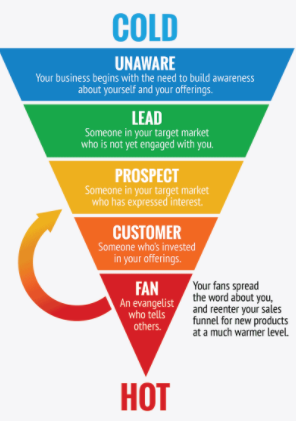
1. Awareness Stage
In the awareness stage, a person realizes that they have a problem or desire and begins looking for ways to solve it.
Let’s look at an example: Julie has just been in an accident and is now injured due to someone else’s negligence and begins searching for personal injury lawyers.
For a personal injury lawyer like Attorney Brian White, Julie enters the awareness stage of the sales funnel once she stumbles across his website during an online search.
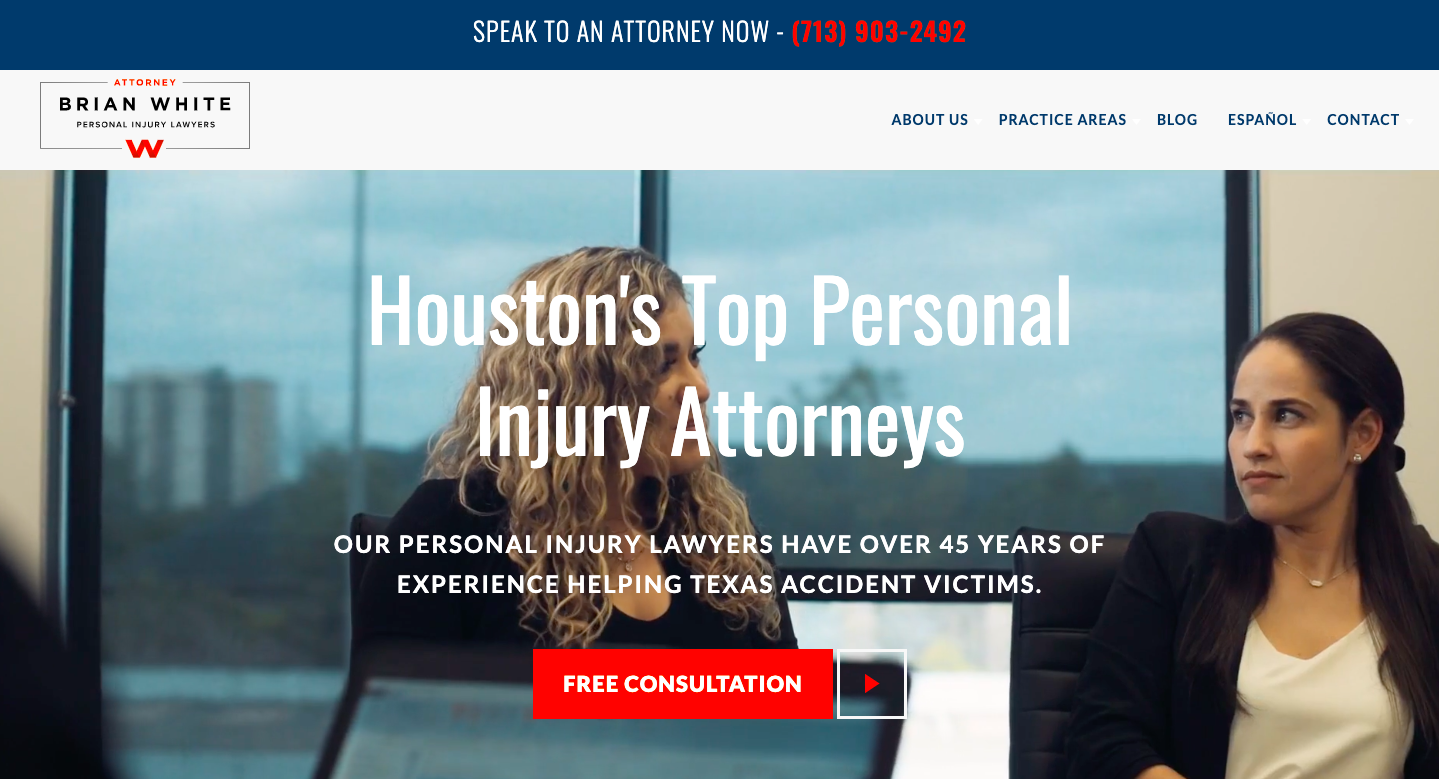
Julie will now either leave the sales funnel by deciding not to use Brian White’s legal services or she’ll move on to the interest stage and become a lead.
2. Interest Stage
Once they’ve reached the interest stage, a person begins comparison shopping, considering their options, and weighing the pros and cons of the choices available to them.
To support potential customers through the interest stage, you need to offer helpful content that doesn’t instantly reach their wallets.
Promoting your product or services too soon is a major turn-off to most consumers, and often comes across as scammy.
In the case of Julie, after becoming aware of Attorney Brian White’s brand, she’s likely looking at a few of his competitors and comparing them.
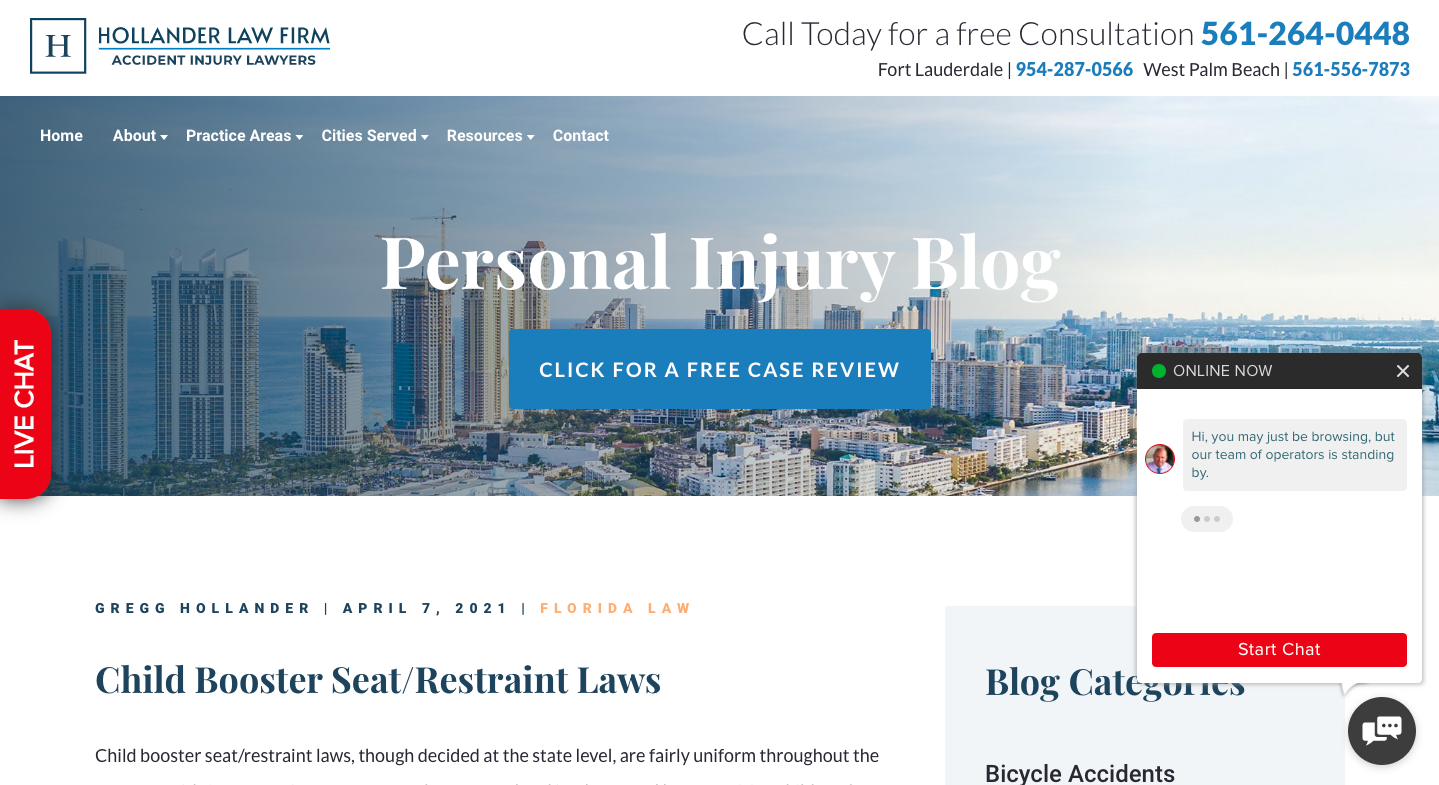
Hollander Law Firm is one of them, and their blog—which provides in-depth information about personal injury law—serves as the perfect example of guiding a potential customer like Julie through the interest stage.
3. Decision Stage
By the decision stage, the consumer has narrowed their list down to two to three options and is ready to make a purchase. Your goal is to still be on that list.
Since your potential customer is now ready to buy, it’s finally the right time to present your offer. Since your potential customer is now ready to buy, it’s finally the right time to present your offer. At this point, you can also use CRM software to learn about customers’ previous purchases and get an idea about their preferences or buying patterns. Based on this, you can provide them with the best product that they would be unable to resist ordering.
However, you must remember that the consumer still has other options. Although they’re already halfway through the funnel, they still haven’t reached the end and can fall out at any minute.
So, what’s the best way to ensure your potential customer sees it through to the finish line and converts?
The answer is simple: differentiation.
It would be best if you had something your competitors don’t do to entice the potential buyer to choose you over them. For example, you can offer them free shipping, discounts on their first purchase, bonuses, or the like.
4. Action Stage
Last but not least is the action stage. At the end of the sales funnel is the stage you want every potential buyer to reach.
It’s pretty straightforward: in the action stage, the consumer decides which brand is worth their money and becomes a customer.
But while this stage might be the end of the sales funnel, it’s certainly not the end of your work.
Once a customer has converted, you should go above and beyond to ensure they have a satisfactory customer experience. If not, you risk losing them as part of your customer base and will fail to receive many referrals.
Simple but effective ways to retain current customers include sending them a thank you email. Luckily there is a lot of free email marketing software you can use. Many features can be used in earlier stages of the sales funnel, like collecting visitors or nurturing leads.
Then, besides following up with emails, be sure to invite customers to leave feedback, offer 24/7 customer support, send them a bonus item, or offer a discount on their next purchase. Elevate their experience with a digital business card link by offering easy contact access and exclusive purchase deals in one personalized space. To create such a card, use the right digital card software.
9 Ultimate Sales Funnel Examples That Convert Like Crazy
Now that you know what a sales funnel is and how it works, let’s look at nine examples of businesses doing it right.
1. Groupon
Essentially a coupon database, Groupon hosts a collection of deals in a site visitor’s local area. Their target audience includes locals who are looking to save money on their regular expenditures and tourists looking for activities to do on a budget.
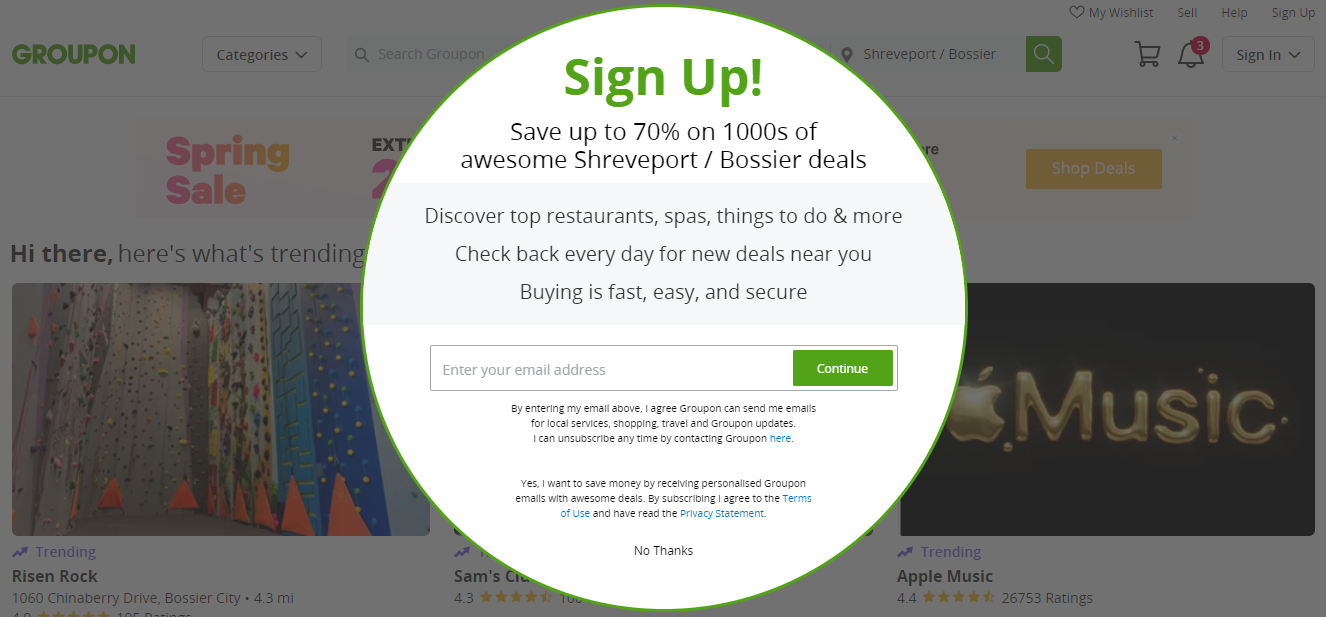
When the site first loads, users are met with a popup CTA that prompts them to sign up. In exchange for their email address, Groupon promises to help them save money by showing them thousands of deals in their chosen area.
This CTA is effective for a variety of reasons:
- It’s simple — users know exactly what Groupon wants them to do
- It’s clear and concise — users know exactly what they’ll get in return for handing over their contact information
- There’s nothing to lose — all they have to do is enter their email address, and they’ll receive thousands of deals. No credit card or free trial required.
Plus, Groupon has been using this popup for years, meaning it’s likely worked well for them.
Once a website visitor signs up with their email address, they become a “lead” and are moved into the interest stage of the sales funnel.
To prompt them into the decision stage, Groupon lets users instantly search for deals. After clicking on one they like, all it takes next is to select the purchase option that they want and click “Buy Now” or “Add to Cart.”
Once again, it’s a simple process that easily moves leads down the sales funnel because of how mindless it is.
Finally, once a lead has converted and is now in the “action stage,” Groupon sends them follow-up offers tailored to their interests to improve customer retention.
2. Basecamp
Basecamp is a project management tool for remote teams and workplaces.
Right away, Basecamp defines their target audience: companies planning to transition their teams to remote work, but are having trouble managing projects and employee stress.
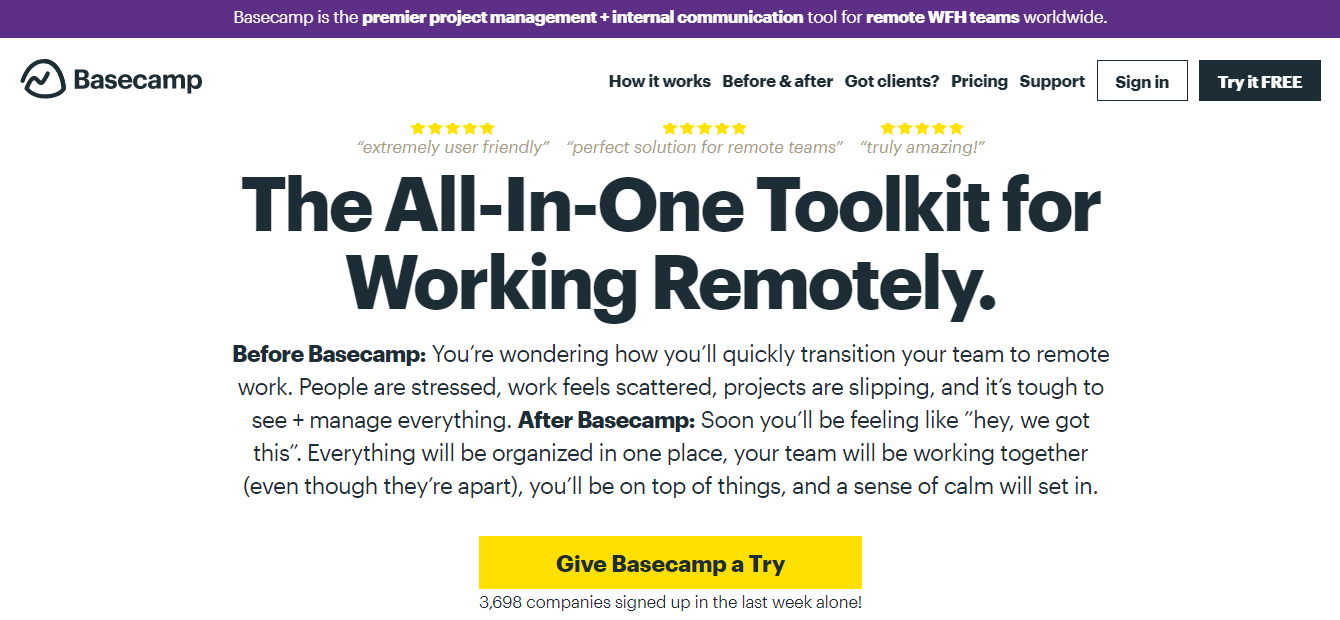
That one sentence is what they say is “before Basecamp.” It instantly addresses their target audience’s pain points and therefore makes a connection with them.
Next, they paint a picture of what “after Basecamp” looks like—feeling confident that everyone’s got it, an organized digital workspace, excellent teamwork, and a “sense of calm.”
After assuring their target audience that they understand their problem and have a way to fix it, they follow up with a CTA that reads “Give Basecamp a Try.”
Another aspect of their landing page that sets Basecamp apart is the way they present social proof. Under the first CTA, they mention that over 3,600 companies have already signed up in just the last week.
After that, they provide users with a visual of what using Basecamp looks and feels like, accompanied by arrows and notes on how certain features work.
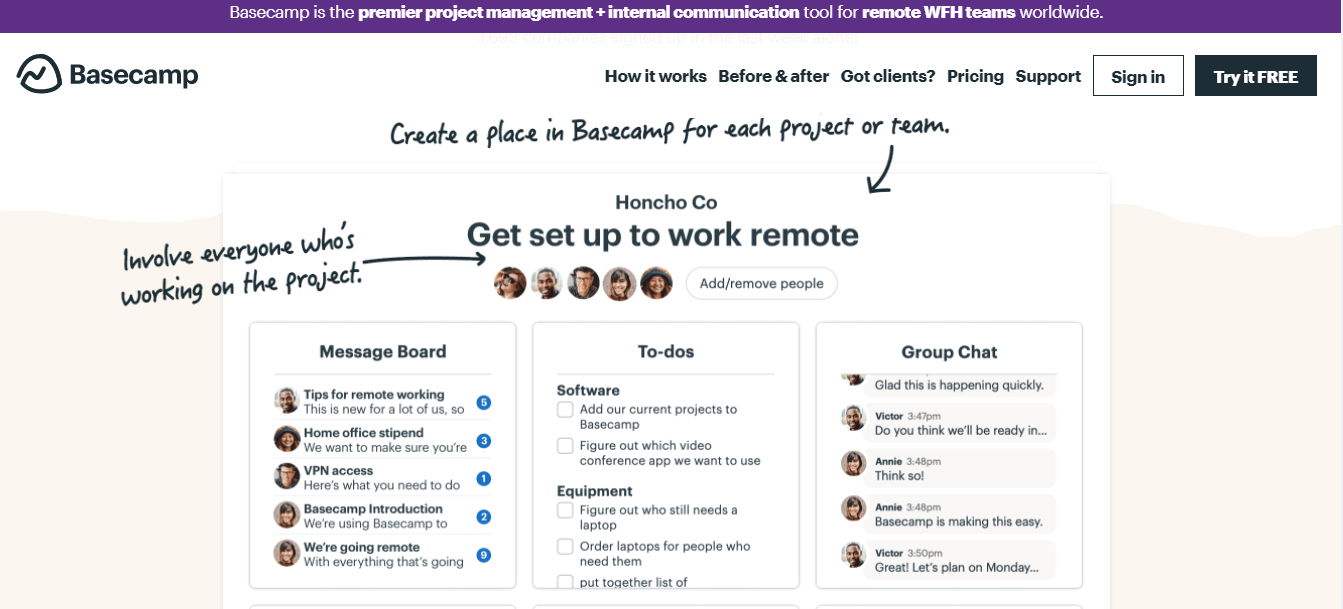
Showing their product in action and connecting with their target audience are two ways Basecamp effectively moves people from the “awareness” stage to the “interest” stage.
As users keep scrolling, they come across testimonials, more screenshots, the book was written by Basecamp, and more. To wrap it all up, Basecamp presents users with the option of a 30-day free trial.
3. Netflix
The most-used video streaming service, Netflix’s sales funnel might just be the reason for its major success.
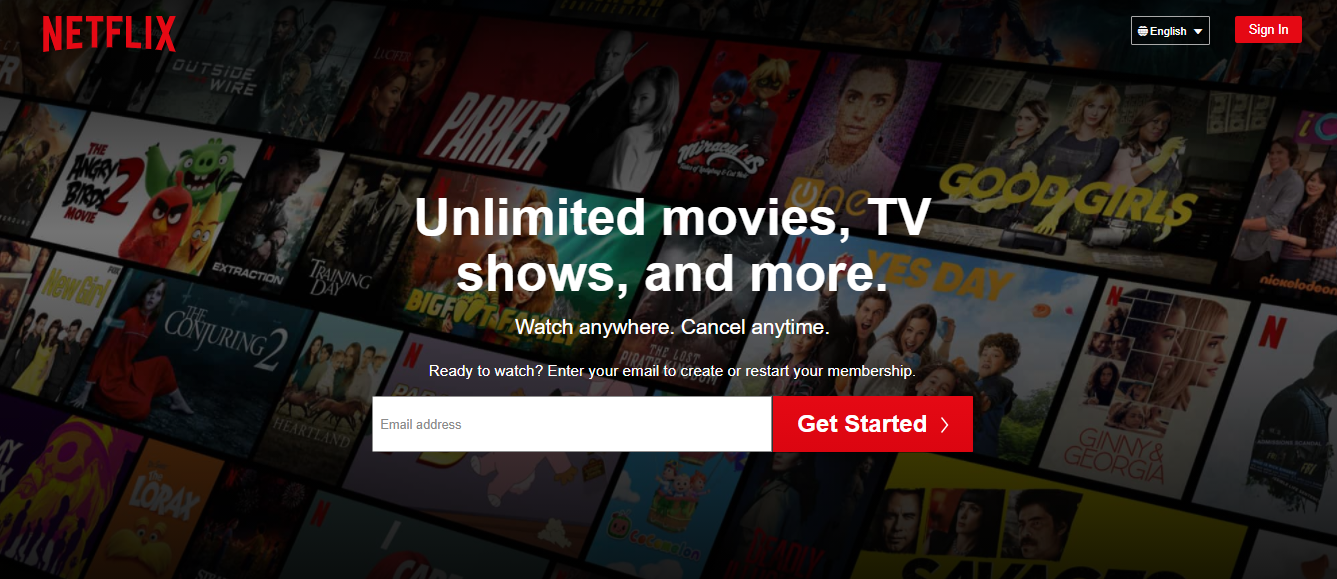
The homepage has very little copy, but what’s there is powerful:
- “Unlimited movies, TV shows, and more.” — Users know exactly what they’re getting when they sign up.
- “Watch anywhere. Cancel anytime.” — It’s risk-free to sign up and you can use it whenever you want.
- “Enter your email to create or restart your membership.” — All users have to do is enter their email address, which can be done in five seconds.
When scrolling down, users are met with simple headings that sum up Netflix’s offerings, such as “download your shows to watch offline” and “watch everywhere.” To show the product in action, Netflix also includes the covers of movies and TV shows they offer and even a small video.
To support interested users and coax them into the decision stage, Netflix also includes an FAQ section where any doubts they have can be resolved. Below is another simple CTA asking for the user’s email address, allowing them to act on their newfound confidence.
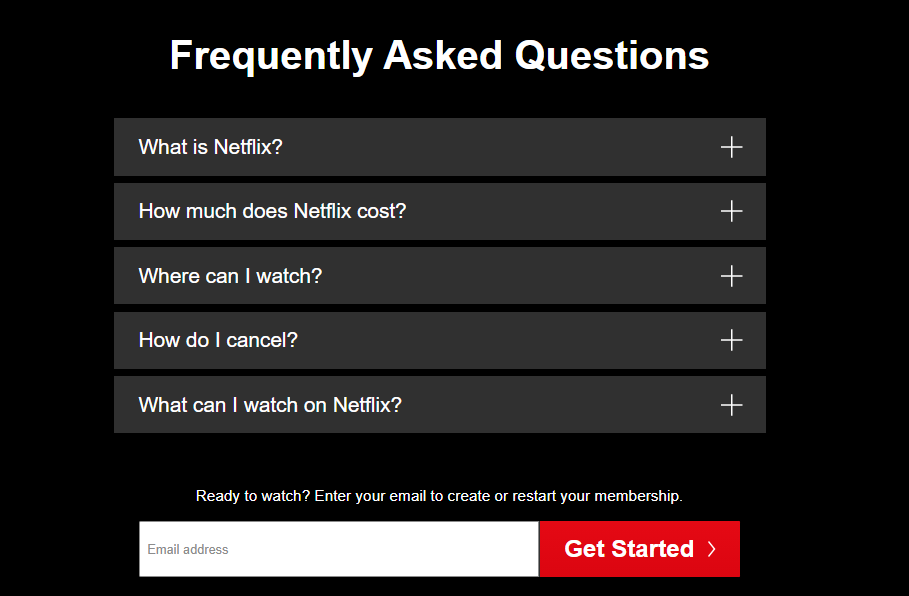
4. Aura
Aura is an amazing repricing and revenue analytics tool. To increase Amazon FBA sellers’ profits, their product maximizes their time in the Buy Box via artificial intelligence and machine learning.
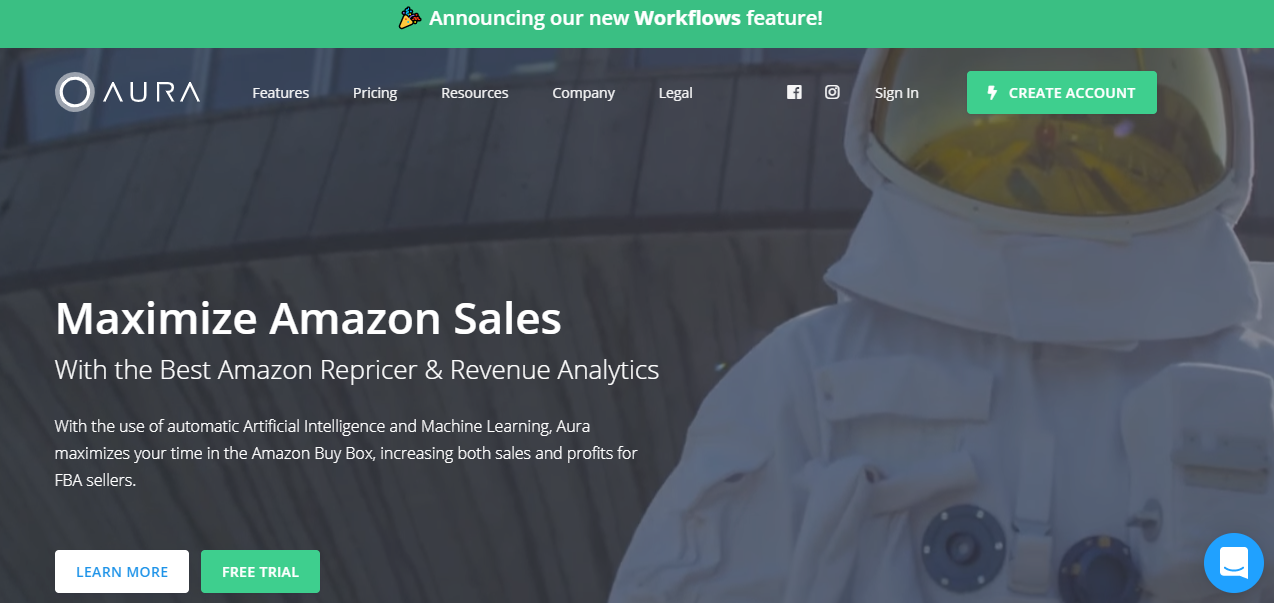
With the first three lines of copy alone, Aura defines their target audience’s goal and how their product helps them achieve it.
Following that information are two CTAs, “Learn More” and “Free Trial.”
Like the previous landing pages, the bulk of Aura’s homepage is filled with social proof, testimonials, and benefits they provide users. In the end, users once again have the option of starting a free trial.
When signing up for the trial, Aura mentions that there’s no credit card required—an effective strategy for increasing conversion rates, as it implies that there’s no risk attached.
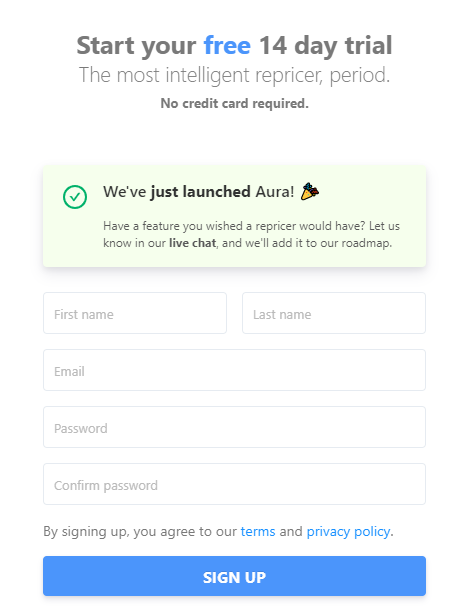
5. LFA Capsule Fillers
LFA Capsule Fillers is a product and service in one. Aside from producing capsules, they also work with customers if problems arise with their projects and offer free training.
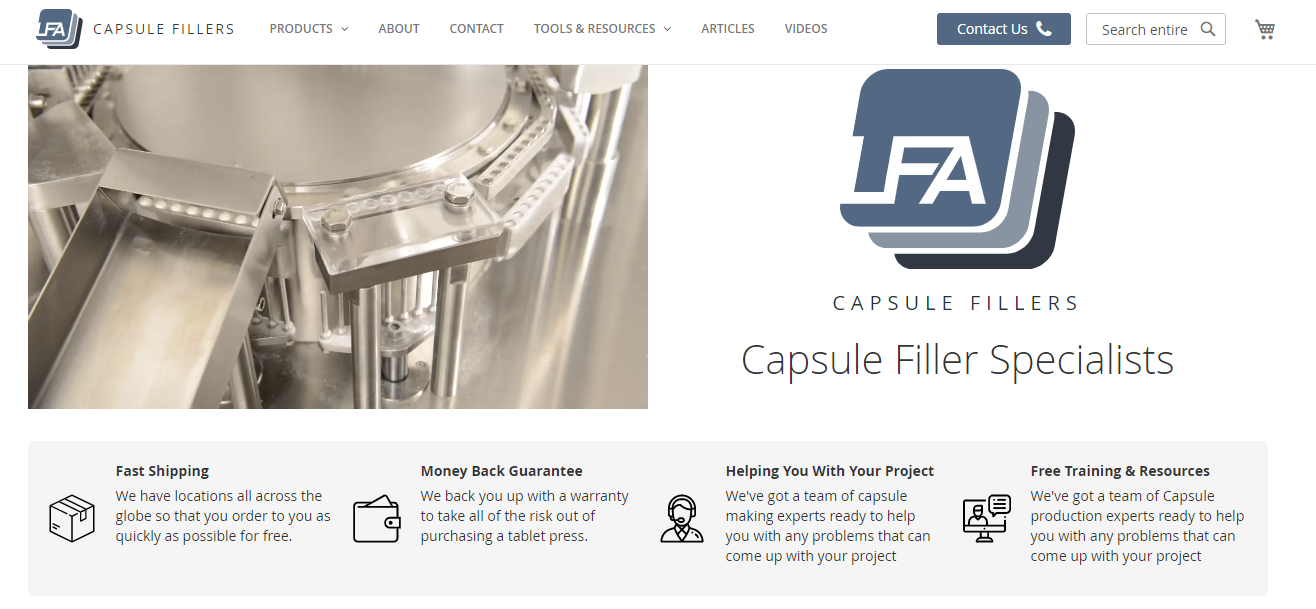
On their homepage, they highlight four attractive benefits that come with choosing them: fast shipping, money-back guarantee, project assistance, and free training and resources.
After scrolling down, there are sections about LFA’s products and machinery, each with CTAs that allow visitors to learn more.
Finally, benefits like fast shipping and a money-back guarantee help users move from the awareness to interest stages, whereas the project assistance and free training are great for customer retention.
6. Nectar
Nectar is an employee recognition software. Their target audience is businesses, and their product allows them to reward employees for high performance.
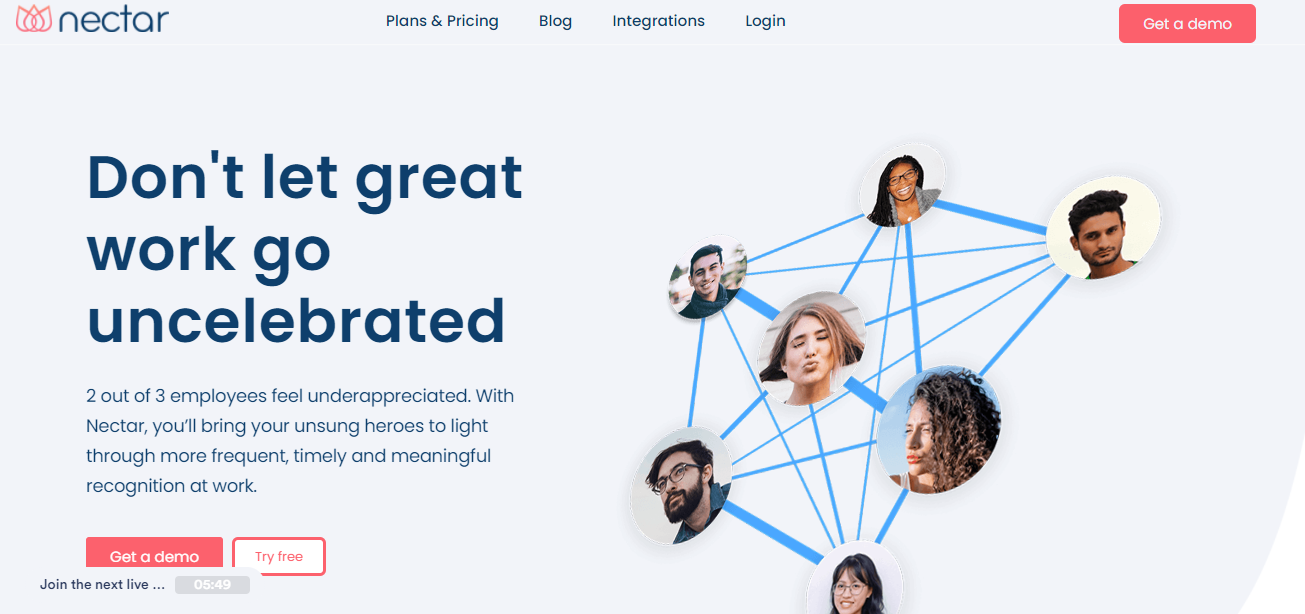
What’s unique about Nectar is that instead of pushing their free trial, they focus on increasing sign-ups for their live demos.
Instead of creating an account to try the product for free, users can instead sign up to watch someone else use it to determine whether or not Nectar is a worthy investment.
Another feature that sets Nectar’s landing page apart is its copy. While most homepages try to sum up their product in a few sentences, Nectar brings awareness to a workplace problem and then poses a solution.
7. LawRank
LawRank is an SEO agency that specializes in the legal industry—something that sets them apart from other digital marketing businesses.
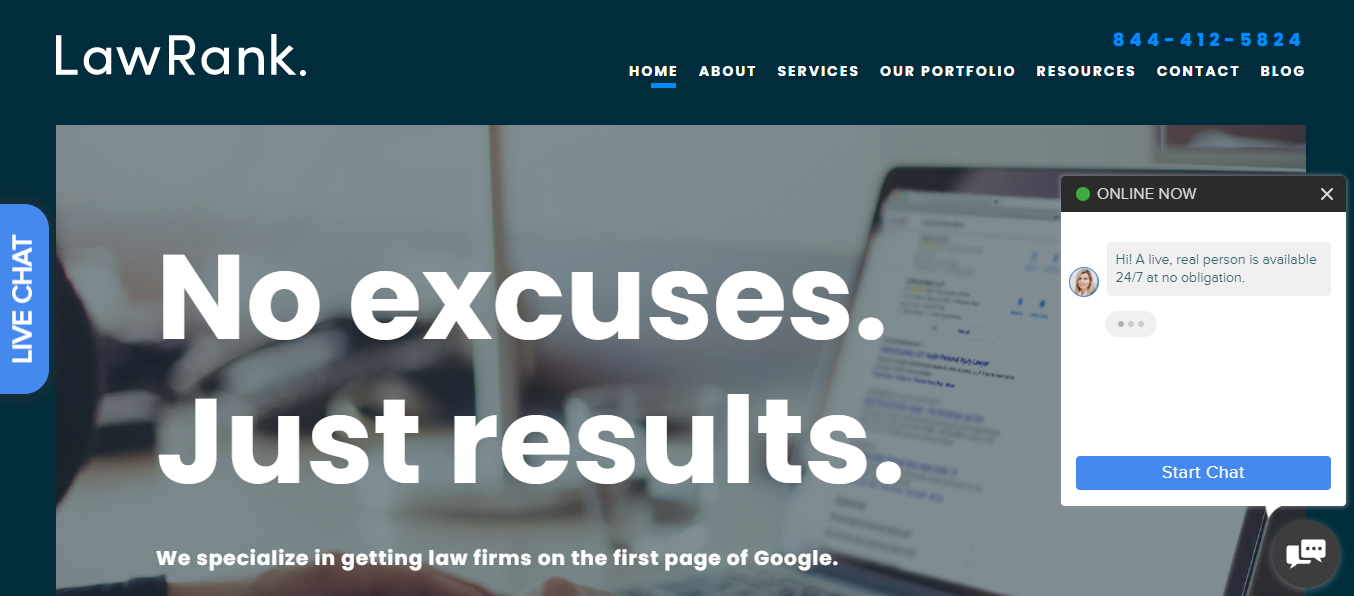
After establishing their brand’s purpose, LawRank includes a CTA that prompts users to schedule a call.
What’s more, LawRank uses a live chat. Live chats have become an increasingly popular digital marketing tool, as they allow potential customers to chat with a real human 24/7.
Not only does LawRank include social proof on their landing page, but also specific examples of how their services have benefited their law firm clients.
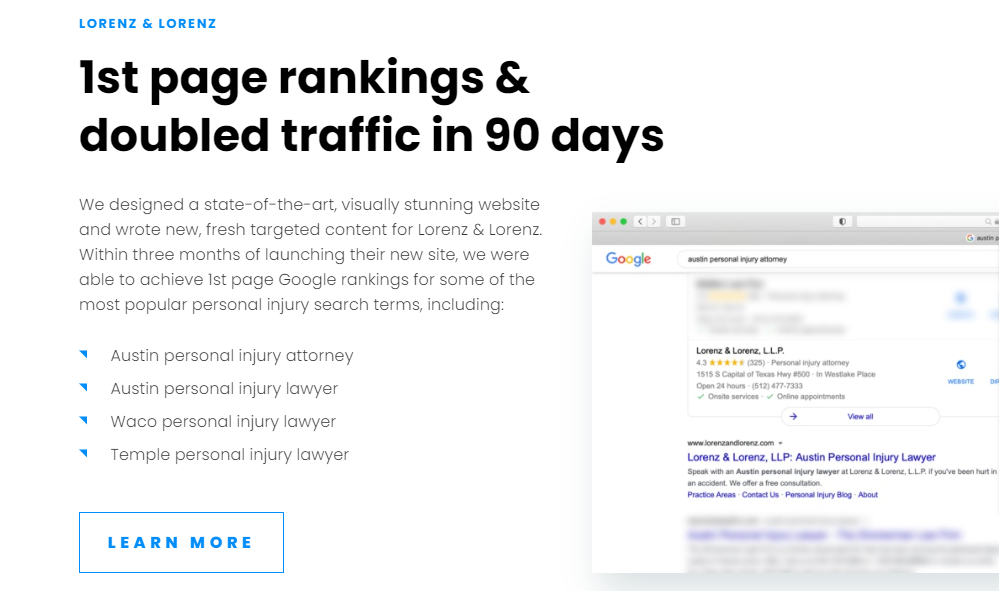
8. Harvest
Harvest is a time tracking software that lets clients do everything from time logging to invoicing.
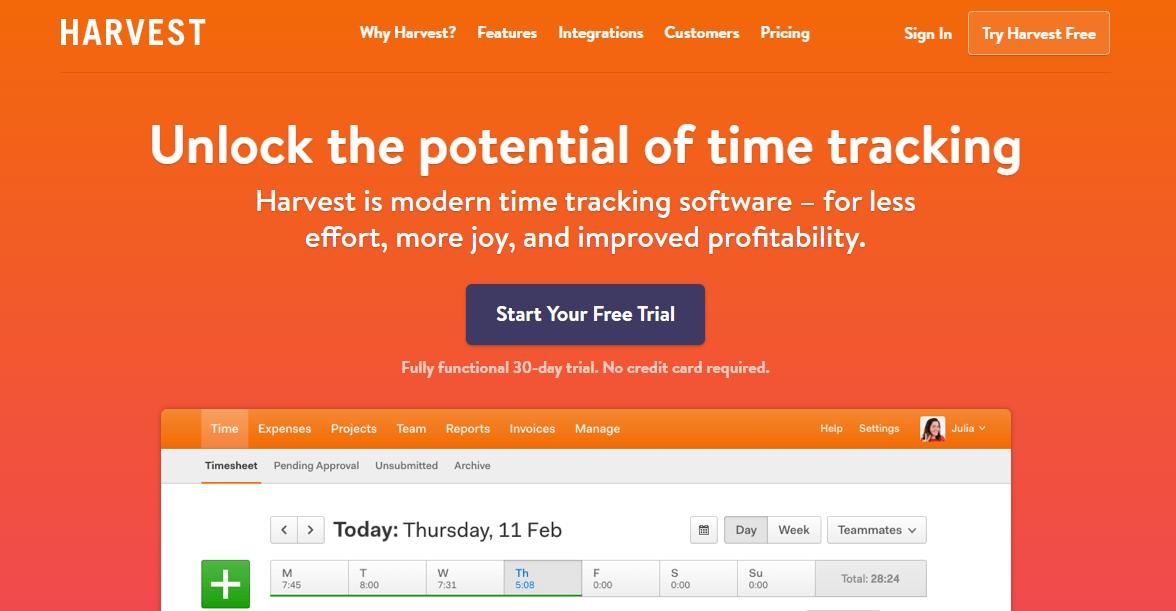
On their homepage, Harvest includes a screenshot of their product in action, reputable companies they’ve worked with, colorful testimonials, and all their available features.
Harvest does an outstanding job when it comes to supporting users through the sales funnel in all stages.
For visitors in the awareness stage, they offer guides and templates. For those in the interest or decision stages, there are webinars available that introduce the product and even live sessions directed by experts.
Finally, there’s a Help Center available for those in the action stage to improve customer satisfaction.
9. Herbal Dynamics Beauty
Herbal Dynamics Beauty is a skincare brand that offers various products to its customers. They do a great job of guiding leads through the awareness stage by offering tons of information regarding their products as well as about general skincare.
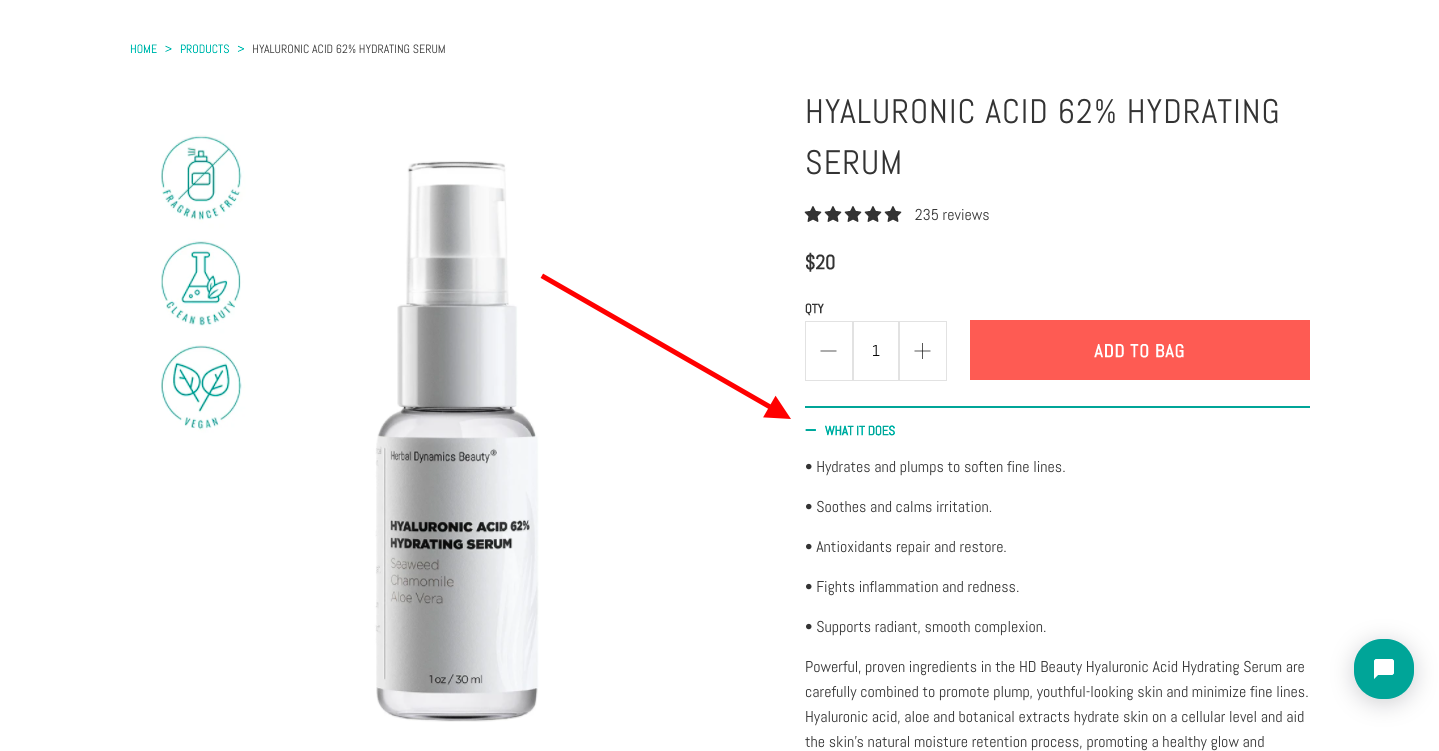
This is done through their blog as well as on their product pages. For example, take a look at their Hyaluronic Acid Serum product page:
It includes information on what the product does, how to use it, pricing, shipping, and more. One of the most important aspects of any sales funnel is to make it easy for your lead to make a purchase.
This entails giving them the right information, guiding them through the buying process, and showcasing the benefits of your product- all things that Herbal Beauty does well.
Sales Funnels Hold the Key to Higher Conversion Rates and More Sales
Tailoring your marketing to the audience you’re trying to reach is one of the most effective ways of winning their trust, and seamless sales funnels let you do just that.
Whether you’re running an eCommerce store or a freelance business, a funnel can lead to higher conversion rates and increased revenue.
